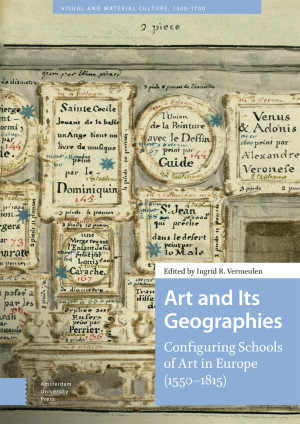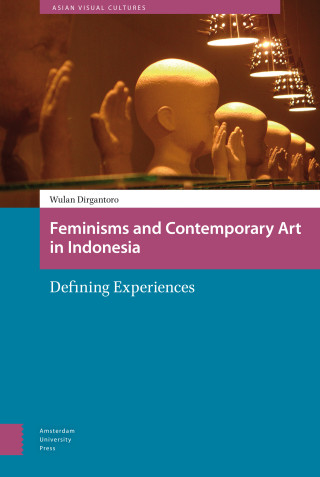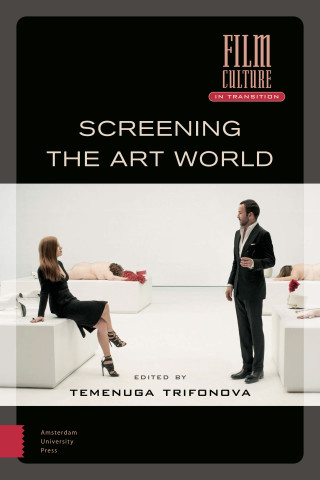INTRODUCTION
Art and Its Geographies, 1550–1815. Configuring Schools of Art in Europe - Ingrid R. Vermeulen
ACADEMIES OF ART, CHURCHES, AND COLLECTIVE ARTISTIC IDENTITIES
Notions of Nationhood and Artistic Identity in Sixteenth- and Seventeenth-Century Rome - Susanne Kubersky-Piredda
A Failed Attempt to Establish a Spanish Art Academy in Rome (1680). A New Reading of Archival Documents - Maria Onori
Mantua: A School of History and Heritage (1752–1797) - Ludovica Cappelletti
ART LITERATURE, ARTISTS, AND TRANSNATIONAL IDENTITIES
Conceptualizing Schools of Art. Giovanni Battista Agucchi’s (1570–1632) Theory and Its Afterlife. - Elisabeth Oy-Marra
Claimed by All or Too Elusive to Include: The Appreciation of Mobile Artists by Netherlandish Artists’ Biographers - Marije Osnabrugge
The Galeriewerk and the Self-Fashioning of Artists at the Dresden Court - Ewa Manikowska
DRAWINGS, CONNOISSEURSHIP, AND GEOGRAPHY
Padre Sebastiano Resta (1635–1714) and the Italian Schools of Design - Simonetta Prosperi Valenti Rodinò
Connoisseurship Beyond Geography: Some Puzzling Genoese Drawings from Filippo Baldinucci’s (1624–1696) Personal Collection - Federica Mancini
Arthur Pond’s (1705–1758) Prints in Imitations of Drawings (1734–1736): Old Masters, Copies, and the National School in Early Eighteenth-Century Britain - Sarah W. Mallory
TASTE AND GENIUS OF NATIONS
‘Taste of Nations’. Roger de Piles’ (1635–1709) Diplomatic Take on the European Schools of Art - Ingrid R. Vermeulen
How Do Great Geniuses Appear in a Nation? A Political Problem for the Enlightenment Period - Pascal Griener
PRINTS, COLLECTING, AND CLASSIFICATION
Dezallier d’Argenville’s (1680–1765) Concept of a Print Collection: by Topic or by School? - Gaëtane Maës
Michael Huber’s (1727–1804) Notices (1787) and Manuel (1797–1808). A Comparative Analysis of the French School of the Eighteenth Century - Véronique Meyer
Chronology and School. Questioning Two Competing Criteria for the Classification of Print Collections around 1800 - Stephan Brakensiek
ART MARKETS: SELLING AND COLLECTING
The Eighteenth-Century Art Market and the Northern- and Southern-Netherlandish Schools of Painting: Together or Apart? - Everhard Korthals Altes
The Print Collector Pieter Cornelis van Leyden (1717–1788): Literature of Art, Concepts of School, and the Genesis of a Connoisseur - Huigen Leeflang
The Problem of European Painting Schools in the Context of the Russian Enlightenment: Alexander Stroganoff (1733–1811) and his Catalogue (1793, 1800, 1807) - Irina Emelianova
ON PUBLIC DISPLAY IN PICTURE GALLERIES
Everyman’s Aesthetic Considerations on a Visible History of Art: Joseph Sebastian von Rittershausen’s (1748–1820) Betrachtungen (1785) on Christian von Mechel’s (1737–1817) Work at the Imperial Picture Gallery in Vienna - Cecilia Hurley
An Organisation by Schools Considered Too Commercial for the Newly Founded Louvre Museum - Christine Godfroy-Gallardo
Scuole Italiane or Scuola Italiana? Art Display, Historiography, and Cultural Nationalism in the Pinacoteca Vaticana after 1815 - Pier Paolo Racioppi
CONTRIBUTORS
ILLUSTRATION CREDITS
INDEX





